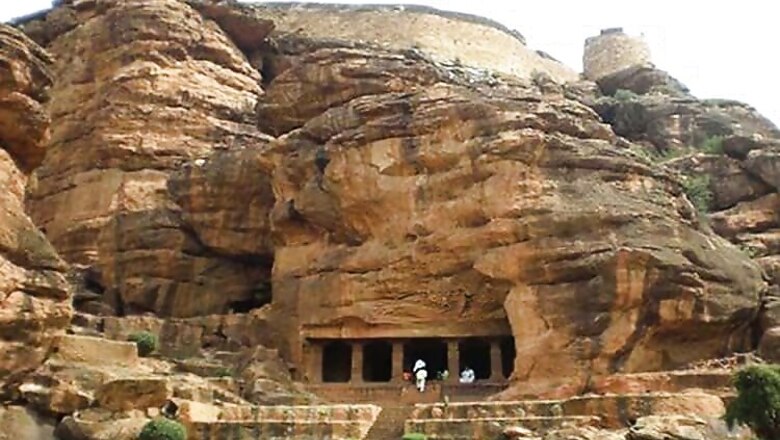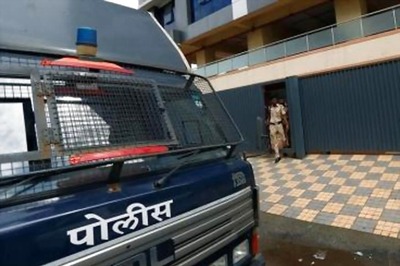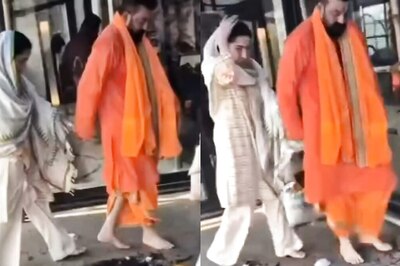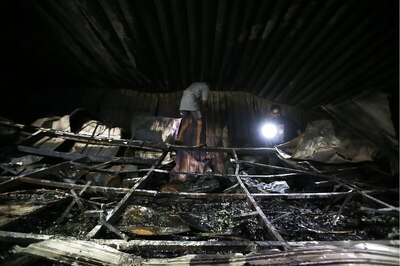
views
With the reorganization of states by the Centre in 1956 on linguistic basis Kannada-speaking parts belonging to the then states of Bombay, Hyderabad, and Madras were added to the old Mysore State along with Kodagu and became Karnataka in 1973. Thus, the pioneering efforts of Aluru Venkata Rao, RH Deshpande, the Vidhyavardhaka Sangha, popular writer Aanakru and thespian Raj Kumar finally bore fruit.
Hyderabad Karnataka, Bombay Karnataka, Karavali Karnataka, Madhya Karnataka and old Mysore were the components of the new state of Karnataka. Right or wrong, language was chosen as the principle underlying process of reunification culminating in an emotional satisfaction to the people. This also brought in its wake turmoil of its own; Karnataka lost Kasargod to Kerala and Belguam came to Karnataka but is still contested by Maharashtra.
The Centre did not anticipate that other factors would emerge as a sore thumb over a period of time. Uttar Pradesh is vast and unwieldy to bring in any effective administration. Telengana within Andhra was a very emotional issue and after years of struggle that involved fasting, blackmail and political opportunism, Andhra Pradesh was finally bifurcated into two states. Grumblings are heard from more areas demanding a separate state.
Belgaum, Bidar, Bijapur, Bagalkot, Bellari, Gulbarga, Yadagir, Raichur, Gadag, Dharwad, Havei, Koppal became part of Uttara Karnataka while Mangalore, Bantwal, Puttur, Sulia, Belthangadi, Bantwal are the Taluks which formed Dakshina Kannada. Some of these places have now acquired new names.
Though unified Karnataka was launched with great fanfare in 1973, over time cracks seemed to have surfaced due to lop-sided development. The much hoped integration and symbiosis has not taken place to the expected level. Integration has been rather slow and economic disparity seems to have widened. Whereas Bangalore has become the second most preferred city in the world for IT in a span of a decade, and to some extent Mangalore and Udipi in Dakshina Kannada has also seen progress, there has not been any noticeable change in Uttara Karanataka region.
While more infrastructural investment have taken place in and around Bangalore to cater to the boom, large sections of Uttara Karnataka have faced official neglect and apathy in way or another. The full potential of Uttara Karnataka is yet to be harnessed.
Neglect over period of time brews resentment.
Noted economist Dr DM Nanjundappa rightly sounded a note of caution in his report on Regional Imbalance in Karnataka and urged the government to set right its priorities. Sadly nothing much has been done.
The very reason why Kannada speaking area was unified was because of real/perceived notions that these areas were neglected by dominant languages of Marathi in Bombay region, Urdu in Hyderabad region and Tamil in Dakshina Kannda areas. However, it is now the economic disparity that has come to fuel the discontent. Successive governments have failed to address the issue and hence the chasm seemed to have widened and hence one can sense onset of disillusionment once again.
The net result is some leaders from these areas are seeing an opportunity to push for Uttara Karnataka as a separate state with an agenda to push their own political careers too. Some leaders like Umesh Katti of BJP have started making claims for a separate North Karnataka state. A Congress member of Legislative Assembly AS Patil Nadahalli from Vijapura district openly made a demand for a separate state embarrassing his own Chief Minister Siddaramaiah. No doubt these are disruptive forces.
Hence, it is necessary to quickly address the problems of Uttara Karnataka, be it in irrigation, creation of projects and jobs, development programmes with a sustained effort over a period of time. It is even worth considering more job oriented projects and more colleges to these areas. Why can’t some of the new projects be set up in Uttara Karnatka and decongest the highly overloaded Bangalore?
It is a warning bell for rulers of Karnataka, be it Congress or BJP to quickly douse the fire which is calling for separation. Whereas language once brought the people together, it is economic disparity that is now leading to a demand for bifurcation.
If the problem is not given the attention it deserves, another problem may surely surface. Karanataka politics, as is elsewhere is mainly caste-based and it is on this plank elections are fought, lost and won. Traditionally the Vokkaligas and Lingayats are the major castes who rule the state with Vokkaligas having an upper hand in southern Karnataka. Uttara Karnataka is mostly Lingayet-based and this might become another issue for demanding a separate state.
Hence it is in the interest of Kannada-speaking community with its rich language, heritage, and vast natural resources in river, minerals and forest that they should stick together and make it work as one. Whichever party rules must ensure that there is uniform economic growth across the state and no area is left to fend for itself. Language may bring emotional stability but it is the economic all round development that is a good health indicator of a state. Any shortsighted policy to develop one community or one part of the state over others is a sure recipe for future disaster. Cracks must be filled in before they turn into fissure.
One hopes state politicians learn this lesson and carry all parts together, lest disaster strike when least expected.




















Comments
0 comment